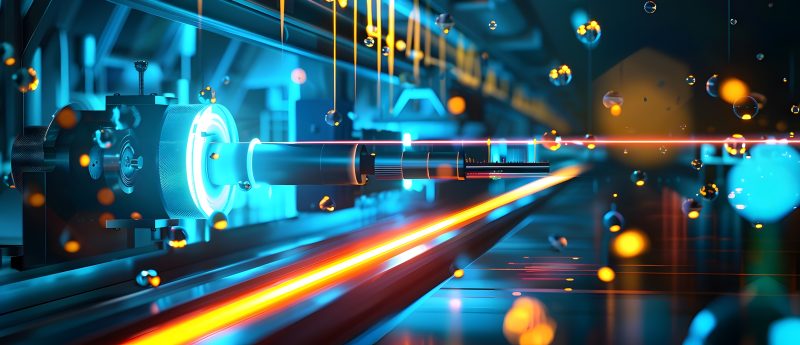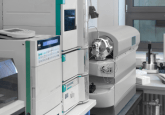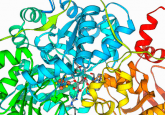The principles of acoustic ejection mass spectrometry: an interview with Chang Liu

Chang Liu
My name is Chang Liu. I am a research scientist working at SCIEX (MA, USA). Since joining the team in 2013, I have been focusing on the hardware research on the front-end technologies coupling with mass spectrometry and their application to the automatic and high-throughput analytical workflow.
What is acoustic ejection mass spectrometry (AEMS) and how does it work?
There are two critical parts in the AEMS technology. The first part is the Acoustic Droplet Ejection (ADE) module, which uses the focused acoustic energy to non-contact eject sample droplets out of the standard microplates. Another part of the AEMS system is the Open-Port Interface (OPI), which is positioned above the microplate. The continuous liquid flow in OPI captures the acoustically dispensed sample droplets and delivers it to the standard ESI-MS for the high-throughput readout.
The integration of ADE with OPI is a like a perfect marriage. We bring the fast, precisely controlled, low-volume sampling to the direct liquid transferring sampling interface without cross-contamination to achieve this label-free, universal ESI-MS based detector with high ionization efficiency and robustness.
What are the advantages of AEMS?
Obviously, the first benefit is the speed. AEMS provides more than an order of magnitude faster sample readout speed than the conventional ‘gold standard’ LC–MS technology, allowing scientists to achieve results faster and enabling them to move more assays from the non-MS platform to the AEMS system.
AEMS is not only a faster alternative of LC–MS, it also addresses many bottlenecks in the high throughput analysis workflow. Since the sample process is contact-free, and due to the continuous self-wash nature of the open-port interface (OPI), the carry-over problem between samples has been eliminated. In addition, AEMS technology is fully compatible with the high-density well format, including the direct ejection from the 1536-well plate.
Another important benefit of AEMS is the greatly simplified sample preparation and method development. Due to the great matrix tolerance provided by the in-line matrix dilution for more than 1000x, the ionization suppression could be significantly reduced or even completely eliminated for a complex biological matrix. Thus, the labor-intensive sample preparation could be greatly simplified, further accelerating the total assay turn-around.
SCIEX have introduced the Echo® MS System – what challenges does this new platform mitigate?
There has been always the dilemma of choosing the analytical platform for the high-throughput analysis with a trade-off between speed and data quality. The LC–MS system could provide the high-quality results, but the slow analytical throughput cannot afford the analysis over a big sample set (from 100k to several million-size compound library). The fluorescence-based detection could provide a high read-out speed, but the label-coupled endpoint may confound the results. AEMS is a revolutionary technology that provides the high quantity quantitation performance at a very fast readout speed.
Because of these advantages, lots of the ‘impossible’ becomes viable now and scientists are re-thinking what the analytical workflow could look like with this new tool. The results turnaround is immediate now. The kinetics measurement does not require parallel samples or quenching operations, since it could be measured in situ. The blank ejections and even internal standards are not necessary anymore. We think we just scratched the surface of the benefits of this technology and we believe it could revolutionize the field of high-throughput analysis.
What are the key features of the Echo® MS System?
The Echo® MS System could provide up to 50x faster analytical throughput than the conventional LC–MS based workflow, while maintaining the great data quality for quantitation. The system has high robustness and is carryover free, thus blank ejection could be avoided. The system has great matrix tolerance, allowing direct analysis from the complex biological matrix without any sample clean-up, which significantly reduces the efforts required for the sample preparation and method development. In addition, this Echo MS system is compatible with high-density microplates, including the 1536 format. What are your predictions for the next 5–10 years in this field? What do you hope to see?
In the next 5–10 years, we predict this chromatography-free high-throughput analytical platform could be used widely in various industries. We hope this revolutionary technology could induce transformative change to the conventional workflow, thus diagnosing disease more accurately, developing therapeutic medicines better and faster as well as helping to provide heathier food and a better environment.
This feature was produced in association with SCIEX. The opinions expressed in this feature are those of the author and do not necessarily reflect the views of Bioanalysis Zone or Future Science Group.






